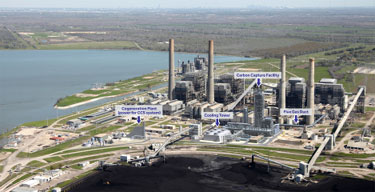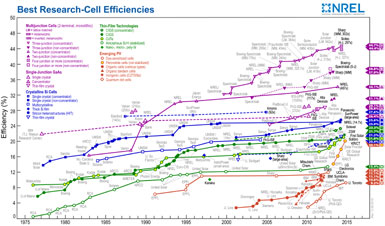At a sagebrush-strewn industrial park outside of Reno, Nevada, bulldozers are clearing dirt for Tesla Motors Inc.'s battery factory, projected to be the world's largest.
Tesla's founder, Elon Musk, sees the $5 billion facility as a key step toward making electric cars more affordable, while ending reliance on oil and reducing greenhouse gas emissions. At first blush, the push toward more electric cars looks to be positive for utilities struggling with stagnant sales from energy conservation and slow economic growth.
Yet Musk's so-called gigafactory may soon become an existential threat to the 100-year-old utility business model. The facility will also churn out stationary battery packs that can be paired with rooftop solar panels to store power. Already, a second company led by Musk, SolarCity Corp., is packaging solar panels and batteries to power California homes and companies including Wal-Mart Stores Inc.
"The mortal threat that ever cheaper on-site renewables pose" comes from systems that include storage, said Amory Lovins, co-founder of the Rocky Mountain Institute, a Snowmass, Colorado-based energy consultant. "That is an unregulated product you can buy at Home Depot that leaves the old business model with no place to hide."
J.B. Straubel, chief technology officer for Palo Alto, California-based Tesla, said the company views utilities as partners not adversaries in its effort to build out battery storage. Musk was not available for comment.
The Tesla systems are arriving just as utilities begin to feel increasing pressure worldwide from the disruption posed by renewable energy.
Lima Meeting
In Germany, the rapid rise of tax-subsidized clean energy has undermined wholesale prices and decimated the profitability of coal and natural gas plants. Germany's largest utility EON SE said last week it will spin off its fossil-fuel plant business to focus on renewables in part because of new clean energy competitors coming onto its turf.
Threats to the traditional utility model come as energy and environment take the world stage at the latest round of United Nations climate talks that began Dec. 1 in Lima. Delegates, backed by global environmental groups, want to leave the conference with a draft agreement to tackle climate change by lowering carbon-dioxide emissions — something that has eluded them for years.
The Rocky Mountain Institute's Lovins has installed solar on his house in Snowmass and uses it to power his electric car. His monthly electric bill: $25. He has a lot of company.
100,000 Plug-ins
In California, where 40 percent of the nation's plug-in cars have been sold, about half of electric vehicle owners have solar or want to install it, according to a February survey by the Center for Sustainable Energy, a green-energy advocate. More than 100,000 plug-ins have been sold in California, according to data from HybridCars.com and Baum & Associates, though EVs make up less than 1 percent of all U.S. car sales.
Few homes and businesses use solar and back-up-battery storage, proof for some utilities that the systems remain a hard sell outside of states like California or markets like Hawaii where high power costs make solar competitive.
Still, the Edison Electric Institute, a trade group representing America's investor-owned utilities, recently announced that its members will help to encourage electric vehicle use by spending $50 million annually to buy plug-in service trucks and invest in car-charging technology.
"Advancing plug-in electric vehicles and technologies is an industry priority," said EEI President Thomas Kuhn.
Charging Stations
Analysts think the industry has been slow to react. Tesla, SolarCity and green-energy companies are already moving aggressively into unoccupied space. "Some of the more nimble companies that think and move more quickly, they are beating the utilities to the punch," said Ben Kallo, a San Francisco-based analyst for Robert W. Baird & Co.
Tesla has installed 135 fast-charging stations, some powered by solar, across North America where its Model S drivers can refuel for free. NRG Energy Inc. is building a network of public charging stations in major cities that drivers can access on a per-charge basis or for a flat monthly fee of about $15.
And then there's the home front. In a July report, Morgan Stanley said Tesla's home and business energy-storage product could be "disruptive" in the U.S. and in Europe as customers seek to avoid utility fees by going "off-grid."
'Sufficient Appreciation'
"We believe there is not sufficient appreciation of the magnitude of energy storage cost reduction that Tesla has already achieved, nor of the further cost reduction magnitude that Tesla might be able to achieve once the company has constructed its 'gigafactory,'" Morgan Stanley analysts wrote.
Tesla sees itself taking on a grand mission — not just to lower emissions from cars and trucks, but to have a societal impact. "If we only do it on the transportation side, we ignore the utility side, and we are probably ignoring half of our responsibility," said Mateo Jaramillo, director of powertrain business development at Tesla Motors, at the recent Platts California Power and Gas Conference in San Francisco.
Tesla and Oncor Electric Delivery, owner of the largest power-line network in Texas, have discussed a $2 billion investment in stationary battery storage to solve the problem of fluctuating output from wind and solar. Tesla and SolarCity are separate entities and only share management at the board level.
Tesla fell 2 percent today to $223.71 in New York.
Smart Home
A glimpse of that future can be seen in Davis, California, where Honda Motor Co. has developed a "smart home" that produces more energy than it uses while charging a plug-in car. The home was designed in collaboration with SolarCity, PG&E Corp. and the University of California at Davis to showcase energy-efficient and renewable technologies. It will serve as a home for a member of the UC Davis community and a lab for the study of new businesses and technologies.
SolarCity rival SunPower Corp. is offering its solar and storage systems to buyers of electric cars from Audi AG and rebates for solar-panels to Ford Motor Co. plug-in customers. SunPower also has struck a partnership with homebuilder KB Home to begin installing solar and storage systems in California.
The time when residents can charge their electric cars with excess solar stored in their home batteries is "not decades away, that is years away," said SunPower CEO Tom Werner.
Holy Grail
Both SolarCity and SunPower say their goal isn't to move customers completely off-grid, just to reduce their dependence on it. "Grid storage has been the Holy Grail for renewables because the energy is intermittent," Kallo said. "Finding a way to store that is very powerful."
For the power companies, the stakes are high.
In June, EEI issued a call to action, saying converting people from gasoline cars to electric vehicles is nearly essential for survival. The report concluded: "The bottom line is that the electric utility industry needs the electrification of the transportation sector to remain viable and sustainable in the long run."
To that point, executives at some of the nation's largest utilities from New York to California say they are preparing their grids for more plug-in cars, reaching out to automakers and working with regulators to make sure customers as well as the utilities benefit from the trend.
Natural Partnership
"I read a lot of articles about Elon Musk versus the utility companies," said John Shipman, who heads electric vehicle programs at New York-based Consolidated Edison Co. "I don't see it that way at all. There is a natural partnership that can exist there."
In California, where electric vehicle adoption is the highest in the nation, and Governor Jerry Brown has set a goal of having 1.5 million zero-emission vehicles on the road by 2025, utilities are already in the game.
"The electric grid will be just as important in the years to come because the grid is becoming the platform that makes it possible for people to plug in solar panels, batteries and charging stations," said Ellen Hayes, a PG&E spokeswoman. "Having a solar panel that isn't connected to the grid is like having a computer that's not connected to the Internet."
Edison International's Southern California Edison and Sempra Energy's San Diego Gas & Electric have proposed investing about $500 million in car charging stations. Along with PG&E, they are backing a proposal that would loosen restrictions on utilities owning charging facilities.
Grid Upgrades
There is yet another side to the argument — can utilities manage the load?
"Electric vehicles can be the best thing to ever happen to our industry or the worst thing to ever happen to our industry," said James Avery, a senior vice president at San Diego Gas & Electric.
Avery doesn't foresee most customers leaving the grid, but does see the risk of an influx of electric cars that overtaxes the network. SDG&E, whose territory has the highest penetration of plug-ins in the U.S., plans to spend as much as $3.2 billion to upgrade its grid. It already offers cheaper rates for EV owners to charge overnight when power demand is lowest.
Southern California Edison is planning to spend about $9.2 billion through 2017 to allow the two-way flow of electricity on its system, said Edison International CEO Ted Craver.
"We are certainly big supporters of electric transportation," Craver said.
He added: "That electric car isn't just going to stay at home. It's going to go other places. It's going to need to get charged in other places. And I think our ability to provide that glue for all those things that are going to plug into that network is really how we see our core business."
Shifting Landscape
Some utilities are more amendable to the shifting landscape than others. Last year, Pinnacle West Capital Corp.'s Arizona Public Service raised the ire of its customers and the solar industry by tacking on a monthly fee of about $5 for residents with solar systems. Adding fixed connection charges or additional fees to such customers may cause more of them to defect, said Lovins of the Rocky Mountain Institute.
"Utilities should look at Elon as a brilliant entrepreneur and innovator who is helping create the new electricity industry and betting against him hasn't worked so well," Lovins said. "I would look at ways to benefit from what he is bringing to the market."








